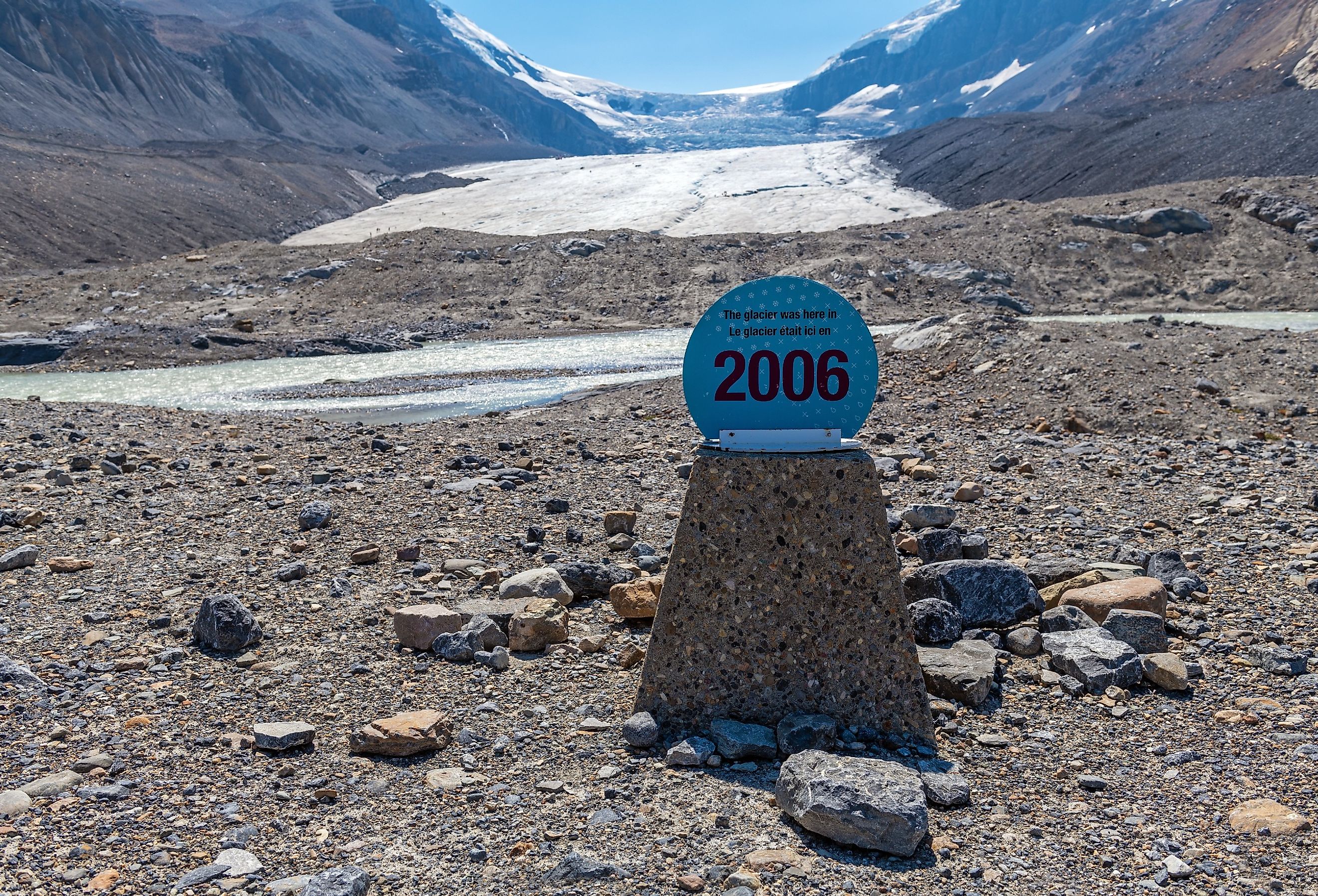
Why Are Canada's Glaciers Causing A Drought?
When we think of drought, we often picture parched, dry sections of land and empty river beds without water. It might be odd to think of a massive, ancient body of ice contributing to drought in Canada.
By themselves, glaciers sitting there peacefully on the tops of mountains are not directly causing droughts. However, as the glaciers melt, they trigger processes that lead to long-term problems for the nearby regions. These vast ice formations, once a reliable source of fresh water, are vanishing at unprecedented rates due to rising world temperatures.
Particularly in regions like the Rocky Mountains and the Queen Elizabeth Islands, this accelerated melting has not only reduced the size of glaciers but also their capacity to sustain river flows during the all important warm months.
In Alberta, rivers get much of their water from melting glaciers. As those glaciers start to melt away, this leads to less available water, which in turn makes it harder for people, plants, animals, and the local economy to deal with dry periods.
This issue isn't just happening in Alberta. It is part of a bigger problem across the Arctic too. Canada's glaciers make up a big chunk of the ice in the Arctic Circle, and although their melt contributes to global sea level rise, it paradoxically threatens the freshwater supplies essential for regional survival.
The impacts of glacier retreat on both a local and global scale, emphasize the need for urgent re-evaluation of water management and conservation strategies in light of ongoing climate change.
Overview of Canada's Glacial Systems
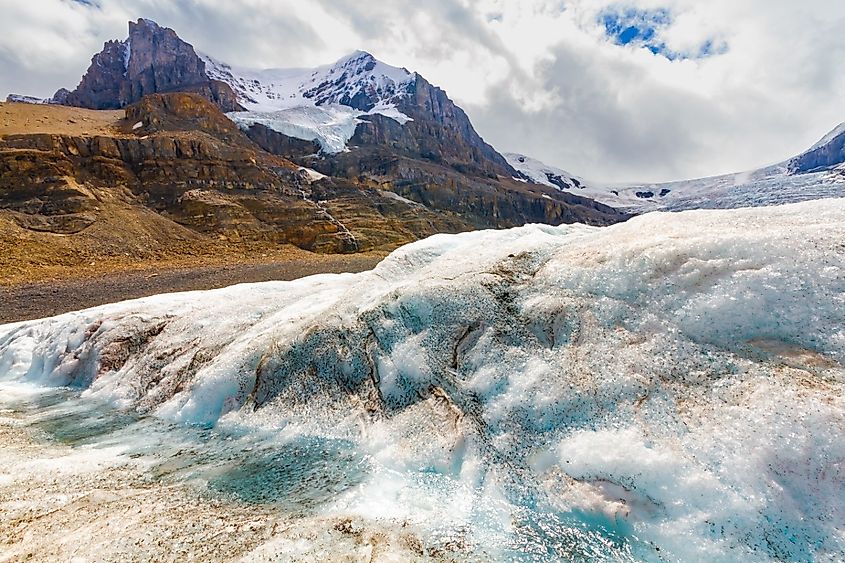
Major sections of Canada's icy glacial system include the Rocky Mountains, the Coast Mountains, and the Arctic. Each of these spots is vital for Canada's water systems. Human dependence on glacial water is not exclusive to Canada either.
In the paper "Contribution Of Glaciers To Water, Energy And Food Security In Mountain Regions: Current Perspectives And Future Prioritie" published in the Annals of Glaciology, it states glaciers support just shy of 2 billion people that live downstream of mountainous regions.
Rocky Mountains
The Canadian Rockies stretch from Northern Alberta and British Columbia, down into the United States. These mountains are part of a bigger mountain system that acts like the North American continent's spine. This region is home to all sorts of glaciers which have shaped the area’s landscapes, and now, also provide water for regional river systems.
For example, the Columbia Icefield contains glaciers that regulate the water flow into major rivers like the Athabasca and Columbia. This regulation is crucial for both wildlife and humans living in those river basins.
Coast Mountains
The Coast Mountains run from near the city of Vancouver at the Fraser River Lowlands, all the way up to the Yukon. This part of Canada features rugged land with glaciers that have formed impressive fjords, crafting a landscape like no other.
This area also gets buckets of rain, which helps dense forests full of evergreen trees to thrive. The glaciers around here are important for keeping rivers and streams flowing and these waterways are essential for the local plants and animals, and for the people too.
Arctic Regions
Comprising the northernmost parts of Canada, including areas like Baffin Island and Ellesmere Island, the Arctic regions are characterized by their harsh conditions and significant ice cover.
The glaciers and ice caps in these areas are less understood but are crucial for global climate systems. They store vast amounts of freshwater and their melt patterns impact global sea levels.
Historically, glaciers have been important in making Canada's natural environment the way it is. They have helped shape how the weather morphed over millennia and how water moves and supports life today.
The Current State of Melt
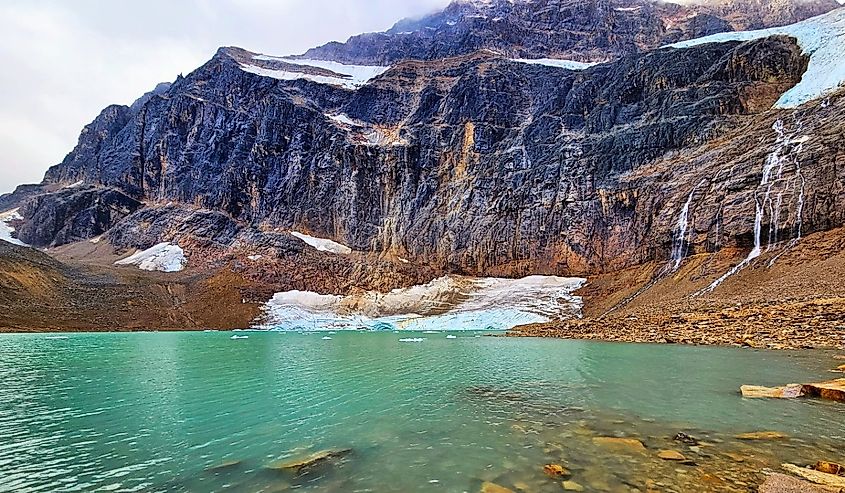
The retreat of glaciers in Canada has critical implications for drought conditions, particularly due to the shift in timing and reduction of glacier-fed river flows.
Back in 2021, then University of Saskatchewan PhD candidate Caroline Aubry-Wake spoke to the Global Water Futures research organization about this very issue. She explained that since 1985, Canadian glaciers have already shrunk 15 percent. Out of the three systems, the Rockies could see that number rise to 100 percent by the end of the 21st century.
This is a point repeated in the 2015 paper "Projected Deglaciation of Western Canada in the Twenty-First Century" in Nature Geoscience. It predicts that by 2100, 70 to 90 percent of glacier ice in Canada will be gone. Many in the field agree that glaciers are not just melting, but they are melting quickly and may soon either break down completely or disappear.
As the glaciers melt, more water is available in the water systems, so the whole idea of “drought” might sound silly. At first, water is pumped into rivers as the glaciers start to melt, but as they keep melting and get smaller, the amount of water flowing into those rivers starts to drop.
This is known as "peak water," and marks the tipping point at which the maximum runoff from melting glaciers is reached before it begins to decline. In many regions, this peak has already passed, which leads to reduced river flows, especially during late summer and early fall, the exact time water demand is high due to agricultural needs and lower rainfall.
As well, glacier melt contributes to river flows that are crucial for irrigation, drinking water, and hydropower. The variability of these flows affects water availability and can make drought conditions worse when water is needed the most. As glacier contributions decrease, regions that depend heavily on this source face increased water insecurity, which could force reliance on alternative, potentially less sustainable water sources like groundwater.
The melting of Canadian glaciers not only reshapes physical landscapes but also poses significant challenges for water management systems, demanding strategies that can adapt to changing water availabilities and help mitigate the impacts of droughts exacerbated by climate change.
Connection to Drought
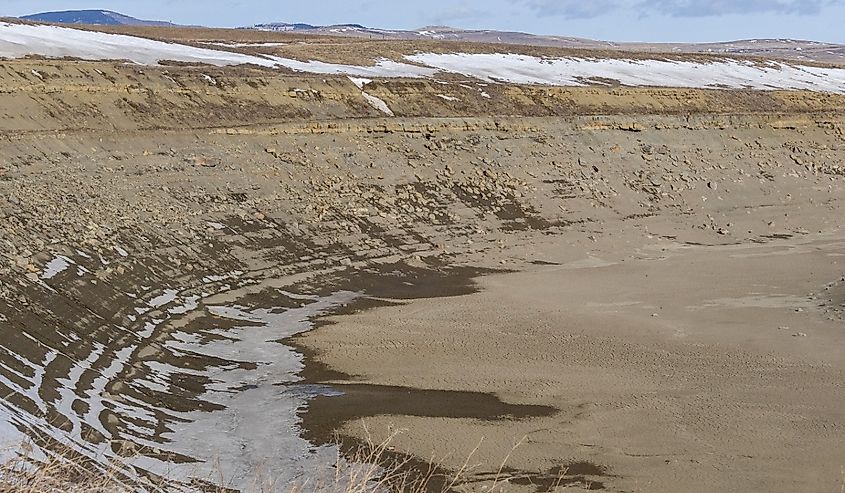
There are many living beings in Canada that rely on the water coming from the glaciers. First off, and the most obvious, are the people. When we look around the world, Canadians are not alone in needing melting glaciers for water.
Back in 2011, Marco Rondón, a Colombian expert on natural resource management, told a Canadian government event (the International Development Research Centre) that at least 200 million people around the world rely on melting glaciers for their immediate water needs.
The relationship between glacier melt and drought begins with an initial paradox. As glaciers melt, particularly during the warmer months, they initially contribute to an increase in river flow. This phenomenon can be observed in the early stages of glacier retreat, where meltwater adds to the seasonal runoff, temporarily boosting the water levels of rivers dependent on glaciers. However, this increase in water availability is misleading and short-lived. As glaciers continue to recede, their ability to replenish rivers diminishes. The critical point arises when the volume of ice loss exceeds the seasonal replenishment rate, leading to a decrease in river flows over time.
In a 2020 paper by Sam Anderson and Valentina Radic, they say their studies show a potentially difficult situation on the horizon for Alberta. They state that one of the most vulnerable areas is the Bighorn Dam, calling it the biggest reservoir in Alberta and one over a million people rely on. To put that number into context, that means almost 1 in 4 Albertans could be in danger of water shortages after the glacier melt is gone.
Humans are pretty adaptable and clever at finding solutions for their water problems, but the same can't always be said for the thousands of species in Canada that rely on this water source. The paper "Contribution of Glaciers to Water, Energy, and Food Security in Mountain Regions," says many scenarios suggest that ecosystems will not be able to adapt, increasing the risk of declining populations of both animals and plants.
This decline can disrupt biodiversity, hitting food chains and essential ecosystem services that keep our environment stable and support our way of life. Losing species can also hurt cultural and economic activities like tourism and farming, which depend on having healthy, diverse ecosystems.
Next, energy and industry will also be affected by drought conditions. This transition is crucial as it marks a shift from abundance to scarcity. In Alberta, for instance, the glacial-fed rivers that support agriculture, drinking supplies, and hydroelectric power are seeing reduced water levels, particularly during late summer and early fall when water demand is highest. In British Columbia, hydropower is responsible for nearly 90 percent of the province's electricity, much of which is supplied by glacial meltwater. So what happens when the glacier water is gone? Will energy levels be affected?
According to the North Cascade Glacier Climate Project, as glaciers get smaller, less water runs off, and less water runs through mountain streams when they melt. This means that during the melt season, there will be less water to produce electricity with hydropower. So, drought conditions associated with glacier melt can even affect our power.
Predictive models suggest that as glaciers diminish, rivers such as the South Saskatchewan River, sourced from the Rockies, are at risk of long-term declines in water flow, potentially triggering water shortages and drought conditions, affecting millions of people and wildlife dependent on these ecosystems.
Communities and ecosystems that were once sustained by the predictable flow of glacier-fed rivers are facing new vulnerabilities. The irony of water-rich Canada facing such shortages highlights the interdependencies within natural water systems.
Environmental and Ecological Impacts
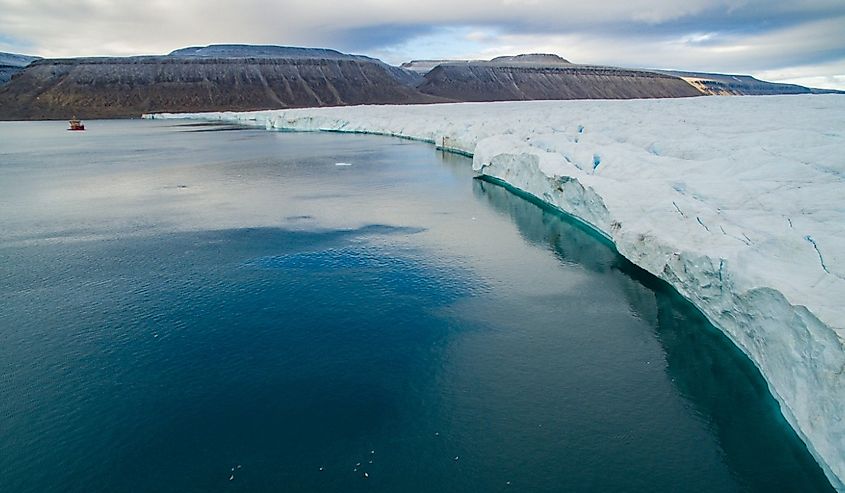
Future Challenges
One big challenge is pretty clear: glaciers are shrinking fast.
According to Caroline Aubry-Wake and John W. Pomeroy, both experts in mountain hydrology, amongst many other components of water sciences, the Peyto Glacier in the Canadian Rockies could be almost totally gone by the end of the century. Even with predicted higher levels of precipitation, there would still be a 7 percent decrease in the region’s nearby streamflow.
Glacier meltwater is a crucial safety net for communities that rely on it. Glacial meltwater from mountain glaciers is crucial during hot and dry periods, providing essential water when river levels are low.
According to the Intergovernmental Panel on Climate Change (IPCC), this meltwater significantly contributes to river flow, enhancing water availability during times of scarcity.
It also helps stabilize river flows from year to year, even for rivers located far from the glaciers. This process is vital for ecosystems, especially in polar regions where glaciers provide a primary freshwater source. When glaciers melt, they release nutrients like iron into the ocean, fueling algal blooms that are essential for marine food webs. These blooms boost productivity and create biological hotspots, which are crucial for seabirds, seals, and whales.
Indigenous Communities
Based on a Government of Canada report from June 2023, First Nations, Inuit, and Métis peoples are especially sensitive to the impacts of climate change due to their relationship with the land and natural resources.
Droughts are not just about not having enough water; droughts can lead to pulmonary ailments or sickness from toxins in the environment. They can also make it harder to obtain food. A study by the National Aboriginal Health Organization shows that not having enough food is already a problem for Indigenous people. Almost half of the families in some communities up north lack sufficient food. In drought conditions, there is less naturally sourced food, and people have to buy expensive food through export.
This includes spending money on importing water.
For instance, research from the Canadian Institute for Climate Choices suggests that climate change could lead to some places having up to 25 percent less water by 2050. That means harsher droughts could be on the way. Shelley Wright talks about this in her book Our Ice Is Vanishing. She says Inuit communities are already facing worsening health problems like breathing difficulties and mental health challenges.
If droughts get worse, health problems will follow, especially for people with pre-existing health issues. Wright quotes research saying that the Arctic might get up to 7 degrees warmer by the century's end. This means there is a higher likelihood of more droughts, which means bigger health problems for the people in drought-affected regions. To support this point, the World Health Organization found that breathing problems have gone up by 20 percent in the Arctic in ten years because of the changing environment.
Warmer weather leads to glaciers melting, reducing the amount of fresh water available. For Indigenous communities, these changes threaten their health and happiness. It highlights the urgent need to take action to support those at risk.
Affect on Animals and Plants
The changing dynamics due to glacial melt have profound effects on both flora and fauna in Canada. These impacts ripple through ecosystems, affecting species that rely on consistent water flow and temperature conditions.
Freshwater species such as salmon and trout are particularly vulnerable. These fish depend on cold, glacier-fed streams for spawning. As glaciers recede and water temperatures rise, these habitats are becoming less suitable.
A study published in the journal Nature Climate Change states that reduced glacial runoff can lead to lower stream flows and higher temperatures, which negatively impact fish populations, reducing their reproductive success and increasing mortality rates.
Mammals like caribou and moose, which rely on aquatic plants and stable water sources, also suffer. Decreased water availability can lead to habitat loss and reduced food supply. Caribou, in particular, are already facing habitat fragmentation and climate change pressures; diminishing water sources exacerbate these threats.
Plant species dependent on moist environments, such as those found in riparian zones, are at risk. Reduced water flow can lead to the desiccation of these habitats, impacting plant diversity. Plants such as willow and alder, which thrive in wet conditions, may decline, leading to a shift in plant community composition and a loss of biodiversity.
Aquatic insects, which form the base of so many food webs, are also impacted. Species such as mayflies, caddisflies, and stoneflies are particularly sensitive to changes in water flow and temperature. Reduced glacial meltwater can lead to decreased oxygen levels in streams, adversely affecting these insects and, consequently, the species that feed on them, such as fish and birds.
Because the natural world is connected so thoroughly, it is impossible to find a part of it not affected by drought conditions.
Mitigation Efforts
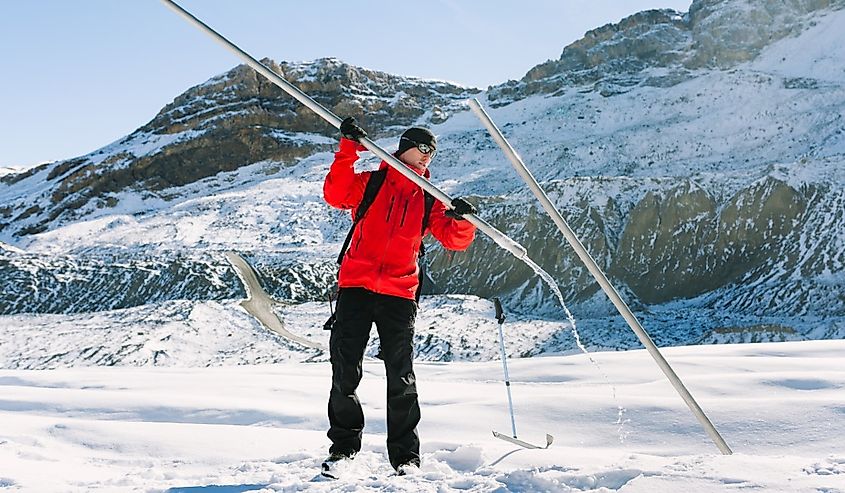
To lessen the effects of glacier melt, efforts to save the natural environment are underway. These include creating protected areas around critical habitats, restoring riparian zones, and managing water resources to ensure sufficient flow during critical periods for wildlife.
Water conservation is crucial too, and people are working to cut down on water waste, especially in farming. Statistics Canada says in 2022, farmers increased their water usage for crop irrigation by 23 percent compared to 2020 because of dry conditions.
Drip irrigation and other advanced methods can significantly reduce water consumption compared to traditional techniques. Technological innovations in water management are also key.
Smart water systems and instant monitoring can make water use more efficient and cut down on waste. In British Columbia, experiments with AI that forecast how much water people will need and help manage water storage better are proving to be successful.
Some of these are part of what Canada is aiming for in their grand plan for protecting nature which all appeared in the report "Protected Areas Program: Strategic Program Plan and Vision to 2030."
Such technologies could help manage the variability in water flow caused by glacier melt. Policy changes are essential to ensure sustainable water use. The Canadian government has been working on integrating climate change considerations into water management policies.
The creation of protected areas around critical watersheds can help preserve natural water systems, even with strategies like scooping up rainwater and giving it a second life to the stuff as usable water.
According to the International Institute for Sustainable Development, if people around the world play their cards right with water-saving tricks, they could be using 40 percent less water by 2050, a massive number. It means even as those big bodies of ice turn to water, people will have a firmer grip on making sure there is enough water to go around for future generations.
In Conclusion
The melting of Canada's glaciers is a clear sign of the urgent challenges posed by climate change, directly linked to drought conditions.
Initially, melting glaciers boost water flow, but this is a temporary illusion. Once these ice reserves shrink, water scarcity becomes a real threat, especially in areas like Alberta, where glacial meltwater supports agriculture, drinking supplies, and hydroelectric power.
This issue is not only about rivers running out of water; it is also about people and animals losing steady access to water and the problems that come with that. This problem affects the environment too, spreading to all aspects of the natural world.
Indigenous groups in particular feel this problem profoundly because of their deep connection to the natural world around them. As droughts get worse, their communities will see worsening health problems and food scarcity. Canada's melting glaciers remind us of the need for better water management and conservation strategies so drought conditions do not happen.
Scientists and professionals point and say we need to rethink how we use water, invest in sustainable solutions, and work together to tackle these changes. By integrating scientific insights, fostering community resilience, and implementing strong policies, the effects of glacial melt might not lead to a future of drought.
Works Cited
Anderson, S., and V. Radić. "Identification of Local Water Resource Vulnerability to Rapid Deglaciation in Alberta." Nature Climate Change, vol. 10, 2020, pp. 933-938. https://doi.org/10.1038/s41558-020-0863-4.
Canadian Climate Institute. "The Costs of Climate Change." Canadian Climate Institute, 20 Jan. 2022, https://climateinstitute.ca/reports/the-costs-of-climate-change/.
Canadian Drought Monitor. Agriculture and Agri-Food Canada, 2024, https://agriculture.canada.ca/en/agricultural-production/weather/canadian-drought-monitor.
Canada, Natural Resources. “Government of Canada Releases New Report Showing the Impacts of Climate Change and Necessity of Indigenous-Led Climate Change Adaptation.” Www.canada.ca, 7 May 2024, www.canada.ca/en/natural-resources-canada/news/2024/05/government-of-canada-releases-new-report-showing-the-impacts-of-climate-change-and-necessity-of-indigenous-led-climate-change-adaptation.html.
Clarke, G., et al. "Projected Deglaciation of Western Canada in the Twenty-First Century." Nature Geoscience, vol. 8, 2015, pp. 372-377.
"Climate Change and Freshwater Resources." eScholarship, 2020, https://escholarship.org/content/qt4485x93s/qt4485x93s_noSplash_675d2f78e8a4a313bacc03d518be2e72.pdf.
“Climate Change Could Alter Range of Caribou and May Impact Hunters’ Access | U.S. Geological Survey.” www.usgs.gov, www.usgs.gov/news/national-news-release/climate-change-could-alter-range-caribou-and-may-impact-hunters-access.
Clason, Caroline, et al. “Contribution of Glaciers to Water, Energy and Food Security in Mountain Regions: Current Perspectives and Future Priorities.” Annals of Glaciology, 14 Apr. 2023, pp. 1-6, www.cambridge.org/core/journals/annals-of-glaciology/article/contribution-of-glaciers-to-water-energy-and-food-security-in-mountain-regions-current-perspectives-and-future-priorities/2D6CB36C24CC5F26F9A9FEE789D119AF, https://doi.org/10.1017/aog.2023.14.
“Columbia Icefield | Icefield, Canada.” Encyclopedia Britannica, www.britannica.com/place/Columbia-Icefield.
"Effect of Climate Change on Landscapes." Indigenous Climate Hub, 2020, https://indigenousclimatehub.ca/effect-of-climate-change-on-landscapes/.
"Federal Government Opens the Door to Projects That Help Keep Canadian Fresh Water Clean and Healthy." Environment and Climate Change Canada, 22 Jan. 2024, https://www.canada.ca/en/environment-climate-change/news/2024/01/federal-government-opens-the-door-to-projects-that-help-keep-canadian-fresh-water-clean-and-healthy.html.
"FAQ: Chapter 2 - Special Report on the Ocean and Cryosphere in a Changing Climate." IPCC, 2019, https://www.ipcc.ch/srocc/about/faq/faq-chapter-2/#:~:text=Melting%20glaciers%20can%20affect%20river,from%20long%2Dterm%20glacial%20storage.
"Glaciers as a Water Resource." AntarcticGlaciers.org, 2022, https://www.antarcticglaciers.org/glaciers-and-climate/glacier-recession/glaciers-as-a-water-resource/.
"Global Glacier Retreat Has Accelerated." ETH Zurich, 2021, https://ethz.ch/en/news-and-events/eth-news/news/2021/04/pr-global-glacier-retreat-has-accelerated.html.
Government of Canada, Canada Energy Regulator. “CER - Provincial and Territorial Energy Profiles - British Columbia.” Www.cer-Rec.gc.ca, 22 Feb. 2024, www.cer-rec.gc.ca/en/data-analysis/energy-markets/provincial-territorial-energy-profiles/provincial-territorial-energy-profiles-british-columbia.html.
Government of Canada, Statistics Canada. “The Daily — Agricultural Water Survey, 2022.” Www150.Statcan.gc.ca, 17 Oct. 2023, www150.statcan.gc.ca/n1/daily-quotidien/231017/dq231017c-eng.htm.
Jacobsen, D., et al. "Biodiversity under Threat in Glacier-Fed River Systems." *Nature Climate Change*, vol. 2, 2012, pp. 361-364.
Klein, Seth. A Good War: Mobilizing Canada for the Climate Emergency. ECW Press, 2020.
Leiss, William. Canada and Climate Change. McGill-Queen's University Press, 2022.
Marshall, S. J., et al. "Glacier Water Resources on the Eastern Slopes of the Canadian Rocky Mountains." *Canadian Water Resources Journal / Revue Canadienne Des Ressources Hydriques*, vol. 36, no. 2, 2011, pp. 109-134.
Milner, Alexander M., et al. "Glacier Shrinkage Driving Global Changes in Downstream Systems." *Proceedings of the National Academy of Sciences of the United States of America*, vol. 114, no. 37, 2017, pp. 9770-78.
Pomeroy, John, et al. Rocky Mountain Water Supply Resilience and Vulnerability Evaluation Project, https://albertainnovates.ca/wp-content/uploads/2018/06/Pomeroy-Rocky-Mountain-Water-Supply-Resilience.pdf.
"PROOF. Indigenous Food Insecurity." PROOF, University of Toronto, https://proof.utoronto.ca/resources/indigenous-food-insecurity/.
Rohanizadegan, Mina, et al. "High‐Resolution Large‐Eddy Simulations of Flow in the Complex Terrain of the Canadian Rockies." *Earth and Space Science*, vol. 10, no. 10, 1 Oct. 2023.
Rounce, David R., et al. "Global Glacier Change in the 21st Century: Every Increase in Temperature Matters." *Nature*, vol. 593, 2021, pp. 49-54.
Williams, Ethan. “After Early Heat, Experts Say Prairies to Face Climate Challenges in Season Ahead.” CBC, 15 May 2023, www.cbc.ca/news/canada/saskatchewan/summer-weather-lookahead-prairies-1.6838672.
"What Canada’s melting glaciers tell USask researchers." University of Saskatchewan, 2021, https://gwf.usask.ca/articles/2021/news-what-canadas-melting-glaciers-tell-usask-researchers.php.
World Health Organization. “Climate Change.” World Health Organization, 12 Oct. 2023, www.who.int/news-room/fact-sheets/detail/climate-change-and-health.
Wright, Shelley. Our Ice Is Vanishing / Sikuvut Nunguliqtuq: A History of Inuit, Newcomers, and Climate Change. McGill-Queen's University Press, 2014.











